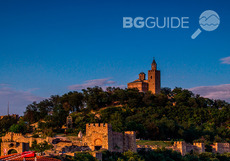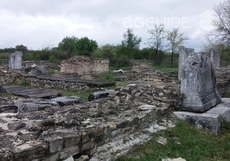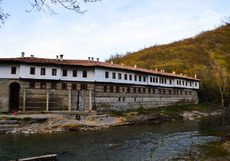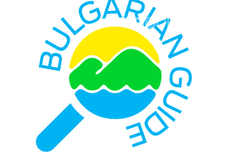Tsarevets Fortress
The influential symbol of the old Bulgarian capital
A time travel ...
The capital of the Second Bulgarian Kingdom - Tarnovgrad (today- Veliko Tarnovo), was center of the liberation struggle against the Byzantine rule. Two brothers – the boyars Asen and Peter lead a rebellion against the Byzantine Empire. The Second Bulgarian Empire occupied the territory between the Danube River, the Balkan Mountains and the Black Sea. First, Peter was proclaimed king, afterwards Asen ascended the throne. After his assassination in 1196, their younger brother– Kaloyan took control of the state and proved as a skilled commander. During his rule the state was consolidated, its territory expanded and its military power immensely increased. The Second Bulgarian Empire reached the peak of its political power and its greatest territorial extension, under Tsar Ivan Asen II’s rule- the kingdom experienced an impressive economic and cultural boom; the first Bulgarian coins were created; trade links with Dubrovnik and the Italian republics were established. Tsar Ivan Asen II’s successful political moves were mainly due to his excellent diplomacy, that added regions between the Black, Aegean and Adriatic Seas to the territory of Bulgaria. Usually, he used the practice of royal intermarriage- marrying his own daughters into other reigning families or using his own dynastic marriages for territorial acquisition. The country became the dominant power in the Balkans. The Church was officially recognized as an independent Patriarchate anew. The period of prosperity and flourishing marked the beginning of intensive construction of churches and monasteries, evidence of which are still present in Bulgaria. Among the symbols of the country’s zenith is the medieval church "St. Forty Martyrs ". The kings Kaloyan and Ivan Asen II, as well as many other aristocrats and members of the royal families, were buried here.
Veliko Tarnovo has always been at the crossroads on the peninsula - a hub of numerous traffic routes, transport flows, meeting point of many trade relations. Since ancient times that has been a prerequisite for its economic and cultural development. The city is among the oldest settlements in Bulgaria and in the boom years of the Second Bulgarian Empire with its medieval fortress Tsarevets - the most impregnable settlement in the country. Tsarevets is located on a hill of the same name -not just a fortress, but a whole medieval town. The royal palace, the church of "St. Petka” (St. Paraskeva of the Balkans or St. Parskevi of Epivati), quite a few residential and commercial buildings, the fortified towers were all rising in its center. The residence of the Patriarch was in its highest part.
Today the castle offers a unique audio-visual attraction -"Sound and Light." Music, lights and the sounds of bells knelling tell a fascinating story- of the glorious and tragic moments in Bulgarian history. The show is traditionally held on March 22, Veliko Tarnovo’s official holiday and on other days- by appointment. Tarnovo was capital of the Bulgarian state again after the country's liberation from the Ottoman rule, though temporarily. The so called “Tarnovo Constitution” was adopted here; the First Grand National Assembly was summoned here as well.
Nowadays the town has preserved much of its ancient appearance. On the streets "Gurko" and "Samovodska charshia"/Samovodski bazaar/, known as the crafts street, there are more than 200- year-old buildings preserved. Most museums are located in the district as well. The “Samovodska charshia” street is intriguing/captivating/ with its many craft workshops, souvenir shops and galleries. Among Tarnovo’s newest "assets" is the one-of–a- kind “Museum of sculptures”, unique in the Balkans. It displays 28 pieces- natural size sculptures of Bulgarian kings, nobles, monks, craftsmen and others. Thanks to the exhibition, the rulers of the Second Bulgarian Kingdom -Tsar Kaloyan, Tsar Ivan Asen II and his wife Irina, the captured Latin knight - Baldwin, aristocrats, warriors, patriarchs, artisans, etc., come to life before the eyes of the visitors. Documentaries about the illustrious city can be seen at the end of this time travel. Going back in time is even more exciting - visitors could try on various costumes from the Age of the greatest kings and be photographed as participants in the events.

The influential symbol of the old Bulgarian capital

"Nicopolis ad Istrum" is an ancient Roman city, founded in 102 A.D. by Emperor Trajan.

The present Kilifarevo monastery is located about 600 m. from the buildings of the former cloister and a fortress that existed during the Second Bulgarian Kingdom.

Крепостта Дискодуратера (пр. Двойна яка крепост) е създадена около 176-180 г., по времето на император Марк Аврелий.

The authentic atmosphere of Veliko Tarnovo’s Samovodska Charshiya Market takes us back to the time of our ancestors.